Tall succulents add depth, texture, and plenty of color to an outdoor garden. Think about your grade school pictorial when they arranged your classmates from the tallest in the back to the shortest in front. That’s what tall succulents do – create layers that allow you to see every plant in your garden.
When located indoors, a tall succulent can become the focal point of the room and its colors provide an elegant contrast to white or light-colored walls. If you’re looking to create a “jungle vibe” or a tropical feel to your living room, a tall succulent can do the job.
In this article, we’ll give you our recommendations for the best types of tall succulents you can plant outdoors or adorn your home. For the indoor tall succulents, we chose species that need only partial light to make them easier to grow and care for.
Best Types Of Tall Succulents For Your Outdoor Garden
Palmer’s Agave
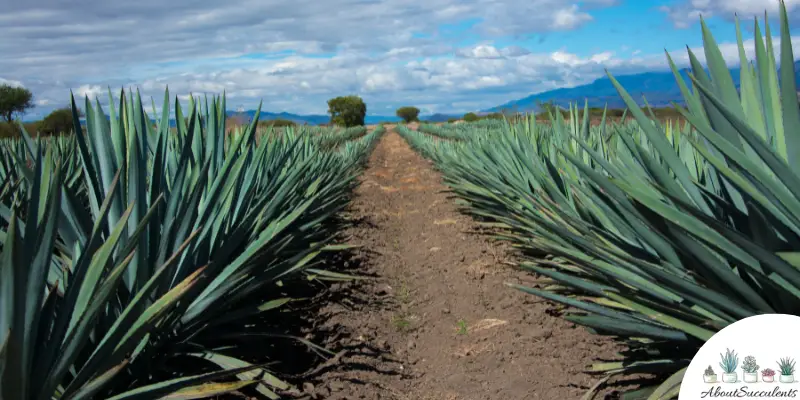
Palmer’s Agave is native to Northern Mexico and some areas in Western America. Also known as Agave palmiera, this succulent can reach a height and width of 4 feet (121.92cm) and is considered one of the tallest varieties in the Agave family.
Classified as a cactus, Palmer’s Agave is characterized by the thick and fleshy leaves that allow it to store water and thrive in scorching heat conditions. Plant Palmer’s Agave in an area that receives 4 to 6 hours of sunlight. And while tolerant of extremely hot temperatures, keep it away from the rays of the afternoon sun.
Because Palmer’s Agave stores plenty of water, the last thing you want to do is to water the soil frequently. This is an ideal succulent for those with busy schedules. Only water the soil when it’s completely dry. As a cactus, Palmer’s Agave can survive for weeks without water.
Giant Agave
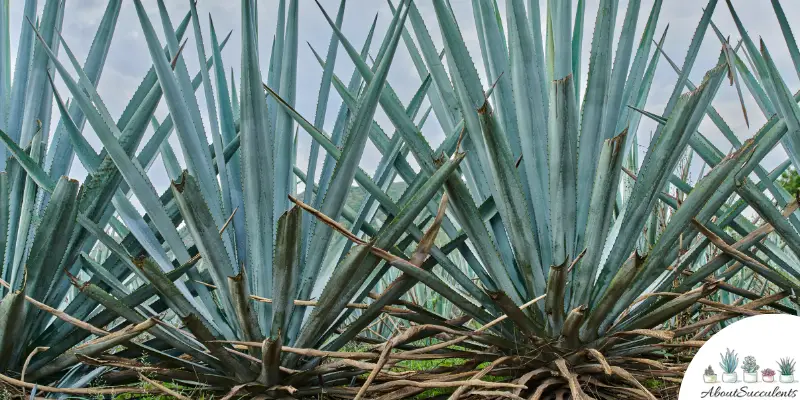
Giant Agave, Green Agave, or Agave salmiana can reach a height of 6 feet (182.88cm) and a width of 12 feet (365.75cm). It’s native to Central and Southern Mexico where the succulent is popular because of its close relation to the Tequila Agave plant.
Whereas some varieties of outdoor succulents can be grown in a pot, Giant Agave is best planted outdoors because it prefers dry conditions. Similar to many species of Agave, Giant Agave stores water in its thick, fleshy leaves and stems. The ideal watering schedule for this tall succulent is once every three weeks.
Plant Giant Agave in an area in the garden that regularly gets 6 hours of full to partial sun.
Queen of the Night
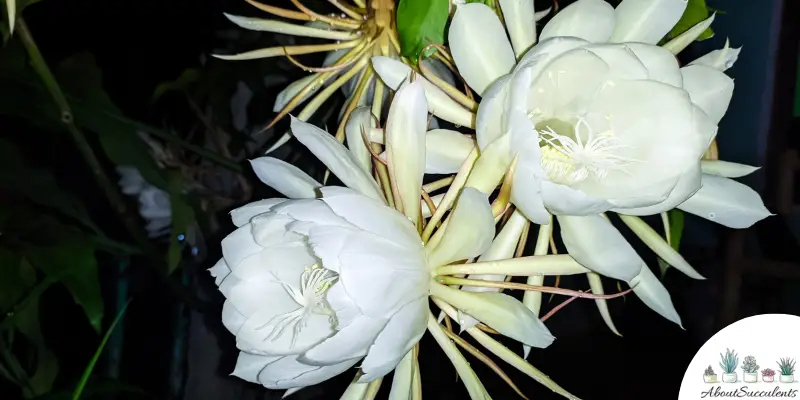
Queen of the Night or Epiphyllum oxypetalum can reach a height of 10-feet (304.80cm) and is native to Southern Mexico. Horticulturists love this tall succulent because it blooms once a year but only at night.
The difficulty of timing the hour when Queen of the Night blooms encourages growers to stage nocturnal events because the flowers wilt by sunrise.
Queen of the Night thrives best when exposed to full or partial sun every day. Water the soil only when it has dried out to avoid root rot. If you live in a region where the temperature drops to freezing, it would be best to plant Queen of the Night in a pot that can be moved indoors.
Sticks of Fire
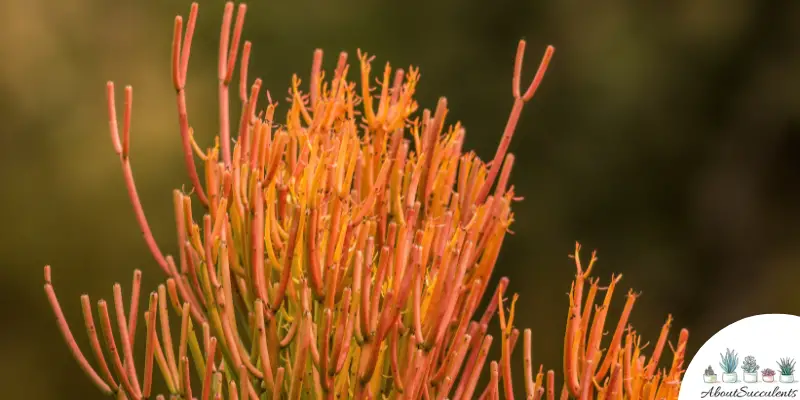
Sticks of Fire or Euphorbia tirucalli “Rosea” can reach a height of 7-feet (213.36cm). It’s sometimes called Pencil Cactus because the protrusions on its stems look like pencils.
Native to Madagascar North, tropical and subtropical Africa, the Arabian Peninsula, and India, Sticks on Fire gets its name from its bright colors of red, yellow, and orange.
To bring out the full beauty and spectrum of colors, plant Sticks of Fire in a location that gets 4 to 6 hours of direct sunlight. In addition, water sparingly or only when the soil is bone dry to keep Sticks of Fire vibrant and alive.
Best Types Of Tall Succulents For Indoor Decoration
Ponytail Palm
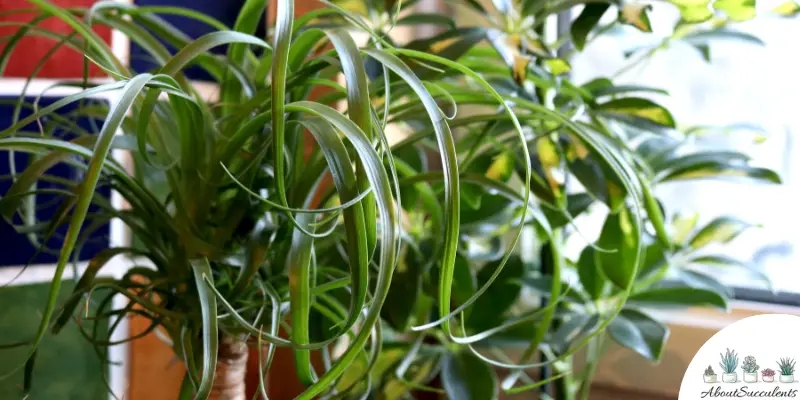
Ponytail Palm or Beaucarnea recurvata looks like a palm but is not one and is a member of the Agave family. This peculiarly beautiful succulent can reach a height of 20-feet so unless your ceiling is higher, it might be a good idea to place it on the patio.
Horticulturists love Ponytail Palm as an indoor succulent for beginners or those with little time on their hands because it doesn’t require much care. As long as you place it near an area that gets partial sun for 4 to 6 hours per day.
However, to ensure proper care and growth, we do recommend placing it under a Grow Light for a few hours a day for at least 6 months of the year.
Likewise, Ponytail only requires watering when its soil has been confirmed dry. Fertilizing the soil once or twice a year will be enough.
Aloe Vera
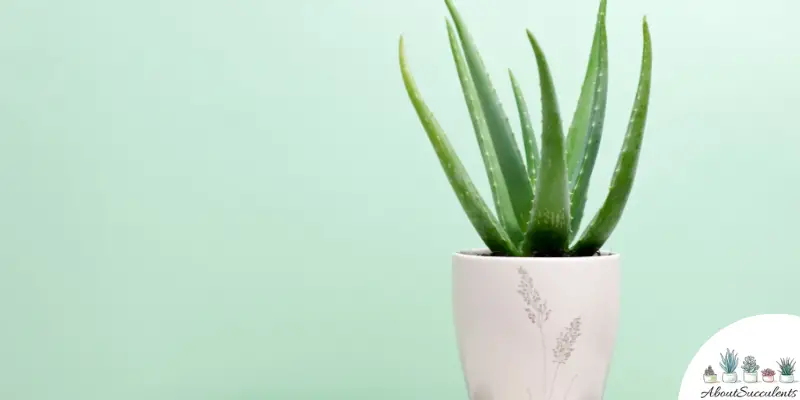
Aloe Vera is native to the East Arabian Peninsula in the Al Hajar Mountains in North Eastern Oman but has made its way to many homes across the globe.
Aside from its graceful leaves and stunning green colors that lend elegance and sophistication to any space inside the house, people also keep Aloe Vera around because the leaves contain a gel that can be used to treat skin conditions, burns, and wounds.
Aloe Vera can reach a height of 3-feet (91.44cm) and is easy to grow and care for. Plant the succulent in a terracotta pot that’s filled with well-draining soil and place it near a window that gets partial to full sun for 4 to 6 hours per day.
Usually, the soil needs to be watered every 2 weeks but to be sure check its level of dryness.
Snake Plant
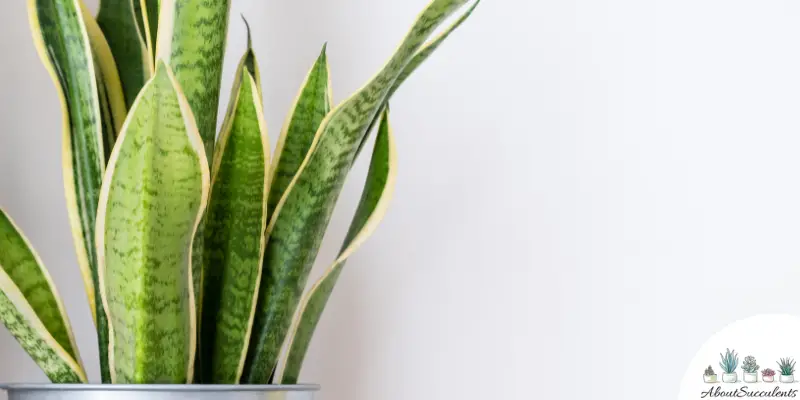
Snake Plant or Sansevieria trifasciata is another popular pick for succulent growers who wish to have a plant growing inside their homes. This plant is native to the tropical and subtropical regions of Africa, Europe, and Asia and has more than 70 species including the White Snake Plant, Cylindrical Snake Plant, and the Golden Hahnii.
A fully-grown Snake Plant can grow to a height of 12-feet (365.76cm) in height. One of the easiest succulent plants to care for, the Snake Plant only needs 4 hours of direct sunlight per day. Similar to other succulent varieties, you only water its soil when it has gone completely dry.
If you’ve had bad experiences growing succulent plants, don’t give up. Re-start your hobby with Snake Plant.
Jade Plant
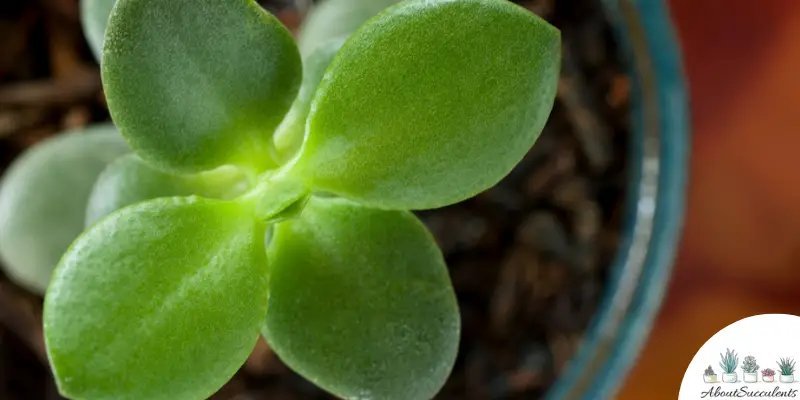
Jade Plant or Crassula ovata is arguably the most popular choice as an indoor tall succulent plant because of the widely-held belief that it brings luck to its bearer. For that reason, Jade Plant carries other nicknames such as Money Plant, Lucky Plant, and Money Tree and is usually presented as a housewarming gift.
Native to South Africa, Jade Plant can grow to a height of 6-feet (182.88cm) but if this is too tall for your space, pruning can limit its height to 3-feet (91.44cm).
Jade Plant needs to receive 6 hours of direct sunlight and for better health, has to be fertilized every 6 months with a water-soluble fertilizer. Only water the soil when it has gone dry.
Conclusion
In addition to giving the succulent plants 4 to 6 hours of full or partial sun per day and water only sparingly, make sure they are planted in well-draining soil in order to remove excess moisture as soon as possible.
Whether you decide to plant the tall succulents outside or grow them inside your home, you can’t go wrong with the varieties discussed in this article. They are colorful, durable, enticing, and easy to take care of.
Last Updated on June 28, 2022 by Sofia Lara